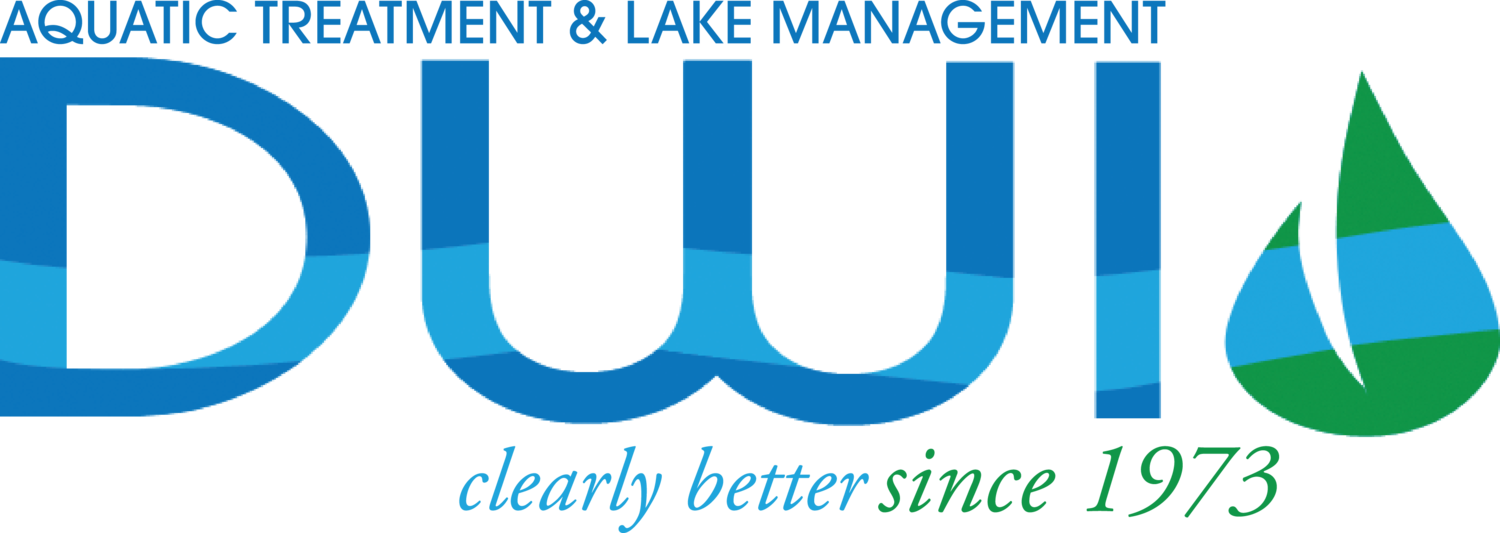By Patrick Simmsgeiger, Founder of DWI
Water features, especially lakes and ponds, are assets that increase the worth and enjoyment of any property. Establishing and sustaining a balanced Food Chain is key to maintaining a healthy, aesthetically pleasing lake or pond- therefore enhancing property value. This article will outline the categories within your lake or pond’s Food Chain and teach you how to develop and maintain your water feature’s ecosystem preserve the health and aesthetic appeal of your lake or pond asset.
A pond’s “cycle of life” beings with plants. Through photosynthesis plants (commonly algae) convert minerals (such as nitrogen and phosphorous) in to organic material- or simply, “food”. All life in a pond is completely dependent upon the photosynthetic process for ”food”, and therefore life. It’s crucial to understand and monitor your lake or pond’s Food Chain to ensure a healthy ecosystem.
Your lake or pond’s Food Chain is categorized by three levels:
At the base level you have what we call Primary Producers. Primary Producers are the plants and algae that convert minerals in to organic material, or “food”.
At the mid level are the Consumers. Consumers, such as tilapia or bluegill, concentrate the nutrients and energy contained with in the organic material by eating the algae.
At the top of the Food Chain are the Bass; they eat the Consumers. Bass are the top predator of the Food Chain in any pond.
Though the Food Chain seems to follow a natural order- from base to Bass- it’s important to recognize that this not a static condition. The Bass will constantly threaten the existence of the Consumers, making it important for you to monitor the fish stock and restock as necessary.
Tips for Proper Food Chain Maintenance
In a new pond, it’s important to stock the water in the proper order so that the ecosystem develops a strong and stable base.
At the base, ponds can be fertilized to encourage algae and plant growth.
After fertilization, Consumers (such as tilapia or bluegill) can be introduced.
And, once the stocks of Consumers becomes established, Bass can be introduced to complete the pond’s Food Chain.
To test the clarity of water (and therefore the concentration of algae) a shiny object such as a pie pan can be nailed to a stick- the stick should be marked in feet- then lowered in to the pond allowing you to easily determine the clarity of the water.
It’s important to keep the algae in check, chemically if necessary, in order to prevent algal blooms which can deplete the water of oxygen that the fish need to survive. If the water in your pond has less than two feet of visibility through the water, there is too much algae- indicating the danger of a destructive bloom.
Your lake or pond’s Food Chain requires maintenance to achieve and sustain a healthy aquatic ecosystem that will ensure your property always has the healthiest and most aesthetically pleasing water feature.



